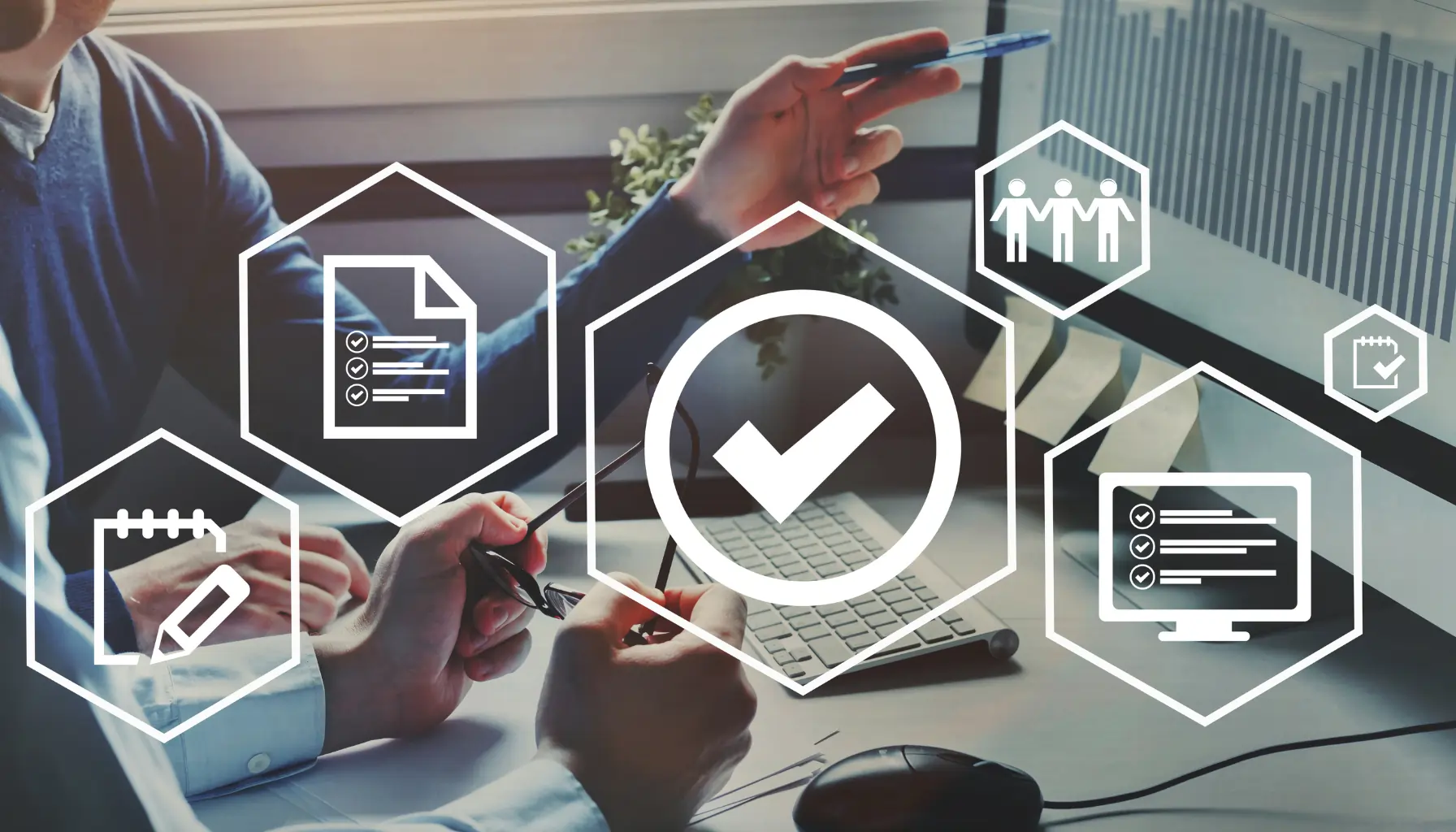This is the age of technology and the world has changed a lot since I was born. My father (Robert Newsom) was a technologist for AT&T before most people had even heard of computers. He managed a computer that was the size of two city blocks in Jacksonville, Florida. From time to time, my brother and sisters and I would go to work with him. He worked evenings and we would walk around the rows and rows of flashing lights and small black and white displays of text.
He had to have the newest technology, the highest amount storage, and slickest interfaces. We often made fun of him about his love of technology. My father taught us that technology was exciting and that it could change lives, and he encouraged my siblings and myself to learn as much as possible about technology. Most of my large family followed in his footsteps and are in technical careers.
My love for technology took me into the banking industry and I learned to program some of these computers. It was fun following in my dad’s footsteps and talking about programming with my Dad.
I also married a technologist. We were blessed with two children, a daughter (Sara) and son (Kevin). Our daughter, Sara, was born with Down syndrome. My family often talked about what technology would mean for her future. My dad was the first person to teach me about the digital divide. He explained that society had an obligation to all of her citizens to ensure everyone had access to ICT.
When Sara and Kevin entered middle school – my husband and I worried about
her employment options. We knew her employment options were going to be dismal compared to the opportunities her brother would have in the workforce.
We wanted to give our daughter more employment options and join the global efforts to reduce the digital divide. In 2001, I created a small technology firm called TecAccess. We helped companies, agencies, universities and nonprofits create, build and maintain ICT products and services that were compliant to Section 508. Our focus was to assure that ICT was accessible to everyone including persons with disabilities. I merged that firm with another technology firm named SSB BART Group in 2011.
During my tenure as CEO of TecAccess – I saw a disturbing trend with companies trying to make their ICT accessible and keep it compliant with Section 508 of The Rehabilitation Act. We would help them make their website, applications, services or products accessible. Then within months or on the next release or version update they would kick themselves out of compliance.
Why? Accessibility had not been built into the processes and blended into the DNA of the organization. Here are a few mistakes that we saw organizations make over and over again:
• The organization would not create a compliance and accessibility roadmap, no success criteria, no measurements, and no ongoing testing or Quality Control.
• We would provide ICT accessibility or Section 508 Compliance training to a team once. Accessibility training would not be ongoing or blended into new hire training.
• The only department engaged in the effort would be IT, instead of engaging all of the departments that are impacted. (i.e. HR, Marketing, Product Development, Procurement, Management and more)
• The organization would not add procurement requirement language so they procured inaccessible products and services.
• The organization only focused on outward facing websites, overlooking other parts of their site like career sites and HR systems. They forgot to make their internal systems accessible, so employees also lost and retention problems were created. Remember according to National Organization on Disabilities (NOD), 80% of disabilities are acquired after birth.
• Usually these organizations had one strong accessibility champion in the firm, and if that person retired or moved to another organization the accessibility program would diminish or disappear.
A few years ago, I started hearing about tools that could produce an accessibility overlay on a website to ensure access for all. I was skeptical and worried that some technologists and corporations might use these tools as a shortcut and not build accessibility into the DNA of their products, sites, tools, and services. My fears were actually realized in a few cases when a few corporations adopted tools that claimed they would make their website accessible and then later learned the websites were not accessible despite the tool.
I worked with multi-national corporations, organizations and countries helping them create policies, programs, and services that are accessible to everyone. These entities want to ensure that everyone has access to their services, products and that their employees also have access. In the late nineties, Frances West, Chief Accessibility Officer at IBM, gave a presentation stating that IBM had three priorities in all internal and external ICT development:
1. Privacy
2. Security
3. Accessibility
I was excited to see a multi-national leader announce their intention to ensure access for all. Over the years, they have proven that ICT can blend privacy, security and accessibility into the DNA of the product, tools, and service.
Other technology giants have joined the conversation and their efforts are helping everyone. We also learned that when a website, software application, app, tool, game or other types of the Internet, Communications and Technology (ICT) is made accessible everyone benefits. Accessibility supports persons with disabilities but also helps novice ICT users, non-native language speakers, senior citizens, and persons with neurodiversity like dyslexia.
The World Health Organization (WHO) estimates that globally 1 in 7 persons have a disability, 1 billion people or about 15% of the population. These numbers will continue to grow for many reasons especially due to aging societies. Think about the implications – would you want to build a system that 15% of your customers could not access?
Countries all over the world have joined the accessibility and digital divide efforts to ensure inclusive education, employment, transportation and ICT for everyone. Each country is trying to solve these issues in ways that best support their citizens and culture. One way is by trying to understand the impact and solutions to the problem. Many countries feel that legislation, policies, and training can help everyone get on the same page. A great example is the United Nations Convention of the Rights of Persons with Disabilities (CRPD). To date over 160 countries have signed the CRPD.
Some countries like the United States have also been litigating when ICT is not accessible for everyone. Someone recently asked me a question during #AXSChat; “Do you think the US could have made progress without legislation and litigation?” My answer was NO. I wish that it could have been a different answer but the US made little progress with disability inclusion and accessibility until we legislated it and began to use our legal system to litigate. These legislative and ligation efforts helped other countries because as the US demanded accessibility and inclusion through our legal channels products became more accessible globally. Should other countries follow this path? I think each country should decide the best path for their citizens but we must do a better job including persons with disabilities in every aspect of society.
The community of persons with disabilities has been educating public and private entities for years about the business case and positive Return on Investment (ROI) of Inclusion and accessibility. Until the US legislated and started litigating over disability inclusion and accessibility we made little to no progress. It is important to note that the United States celebrated the 25th year anniversary of The Americans with Disabilities Act (ADA) in 2015. I do not believe we would have seen progress without that legislation and people with disabilities demanding access in the United States via our legal channels.
The problem is that ICT accessibility can be confusing and tricky to implement into the DNA of an organization. It is not impossible but it is tricky. Consider a website with millions of pages of data, tables, videos, PDFs, audio and many other objects being accessed via computers, tablets, and mobile devices. Many websites are now created in multiple languages. So how do you build accessibility into the DNA of your website? Can the accessibility overlay tools help or will they create problems by giving organizations a false sense of security?
These tools have gotten more sophisticated over the last few years. Some of these tools now appear to have become robust enough to become part of an organizations accessibility roadmap and plan. Can (Should) an organization use these tools to create a layer of accessibility-focused on the client experience?
Many fear that organizations will simply use these tools and then not take the time to blend accessibility standards into the DNA of their technology solutions? Maybe. And if that happens, I believe the community of persons with disabilities should and will continue to fight for their rights via legislative and litigation channels.
I also believe that these tools could help an organization by reducing their risk, creating better customer experiences while doing the work to build accessibility into the DNA of their enterprises.
So let’s explore these tools. I asked some of the tools in the marketplace to provide information about their solutions. I also asked them if they felt their tools solved the compliance and accessibility issues? Without fail, each of these firms told me their tools allow their clients to create more accessible client experiences but they are not a shortcut to compliance. Instead, can these tools can help a website become more accessible while the organization builds accessibility into their core processes.
AiSquared (www.sitecues.com)
Sitecues from AiSquared is a tool that focuses on helping web users who are sometimes left out, even by accessible websites. In the US, 1 in 4 computer users have a mild to severe visual difficulty or impairment and their needs vary. With Sitecues you can expand your website’s reach to those individuals. For example, many web users who have minor vision or cognitive impairments often struggle to read small fonts, to make sense of paragraphs of text, or even to find their cursor on the screen. Though these usability issues are well-known, these types of issues are not generally the focus of website accessibility work. Websites that follow good accessibility practices often fail to address these types of web users. This is where sitecues comes in and extends the benefits of web accessibility to more people.
Sitecues is a software-as-a-service technology that can make any website more accessible and usable. When sitecues is added to a website, it gives website visitors the option to customize the website to meet their individual needs. In this way, websites are made more accessible for individuals with different needs — such as age-related vision loss, learning disabilities, or low literacy.
The designers of Sitecues have thought carefully about the people they are trying to help. All of the user controls are easy to see, easy to understand at first glance, and easy to use through the mouse and keyboard. There are only a few controls, but these controls give users a wide range of ways to see and interact with the website they are visiting. Web users can magnify the page, hear text read aloud, see text in a reformatted reading box, or change color themes.
“Many of our customers are looking to take their website accessibility one step further. They want to go beyond WCAG and create a website user experience that is low vision friendly and senior friendly.” Marc Zablatsky, VP and General Manager of Sitecues
Adding Sitecues is a highly visible statement of an organization’s commitment to accessibility. This is an important benefit and something that is often hard to achieve with other types of web accessibility work. Sitecues sits on the main webpage where it can be seen by anyone who visits the webpage, whether they have a disability, use an alternative access device for assistive technology, or not. In this way, Sitecues is highly inclusive – – exposing new members, customers, employees to accessibility. Sitecues may even be a way to engage other groups within a large organization – such as marketing – in a discussion on accessibility. Learn more at: www.Sitecues.com
***
SSB BART Group (www.ssbbartgroup.com)
SSB BART Group is a global ICT Accessibility Solutions provider located in the Untied States and their tool is called Alchemy.
Why Alchemy?
The accessibility testing and remediation process can be complicated. Even with software that guides developers and testers through the testing process, they will still need to figure out how to resolve the issues that are found. Furthermore, testing can take a lot of time. Even with automated testing, users will frequently need to sift through thousands of violations on hundreds of pages or more. Alchemy addresses these issues.
“In today’s information society websites and applications are updated constantly, making it difficult for accessibility initiatives to keep up with change. Alchemy makes it easy for organizations to streamline their accessibility testing and remediation process, minimizing the time and resources required to gain and maintain compliance with accessibility laws and standards.” Tim Springer, CEO of SSB BART Group
Alchemy Overview
Alchemy is a browser-based accessibility testing tool that allows developers and testers to test web pages for accessibility and resolve instances of accessibility violations in context, directly within the browser. Testers can install the plugin in any of the most commonly-used browsers — Chrome, Firefox or Internet Explorer — and…









